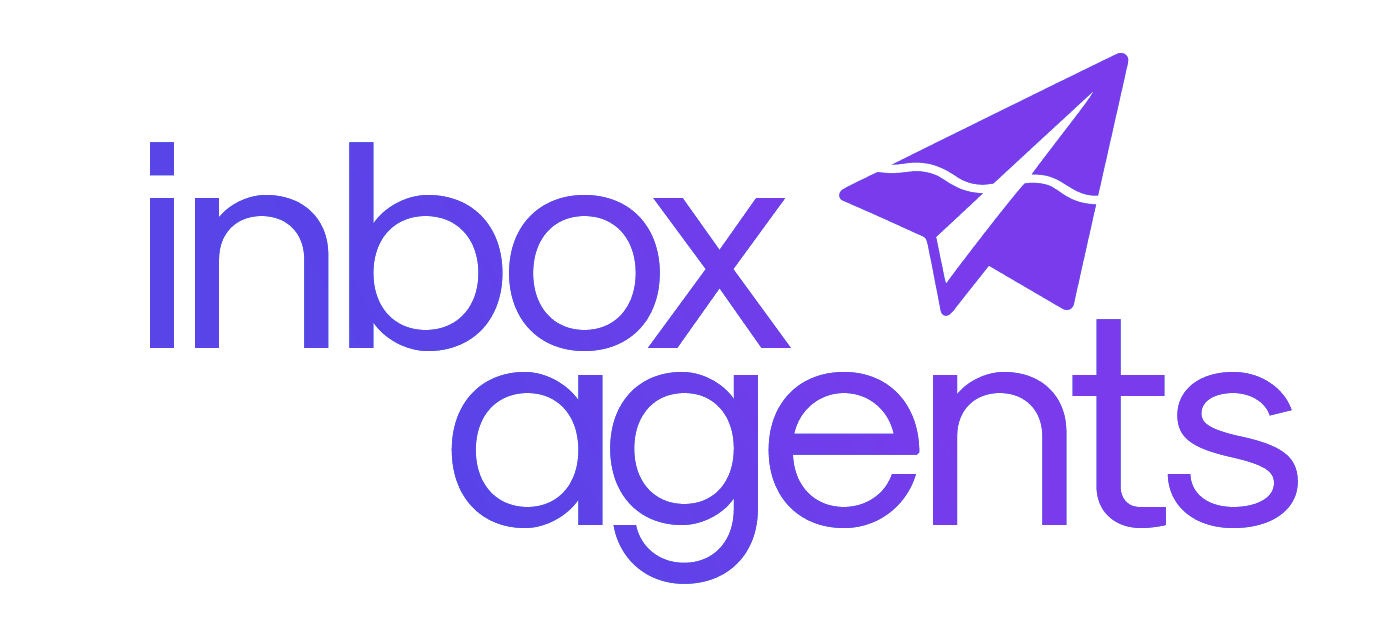
Top 7 AI Tools for Forecasting Support Demand
Forecasting customer support demand is crucial for businesses to meet customer expectations and reduce costs. AI tools simplify this process by analyzing historical data, trends, and customer behavior. These tools improve accuracy, reduce errors, and optimize staffing, which accounts for 70% of contact center expenses. Here's a quick overview of the top 7 AI tools for support demand forecasting:
- Inbox Agents: Centralizes messaging channels, provides detailed predictions, and integrates with over 100 platforms like Salesforce and WhatsApp.
- Crescendo.ai: Delivers 99.8% response accuracy, integrates with popular CRMs, and uses predictive analytics to manage demand spikes.
- Webex Contact Center AI: Combines predictive analytics with live monitoring, ensuring real-time adjustments to staffing levels.
- Tidio: Offers a multi-channel platform for small teams, integrating with tools like Shopify and HubSpot for demand forecasting.
- InsightSquared: Focuses on sales-driven forecasting with advanced analytics and CRM integration.
- Salesforce Einstein: Built into Salesforce, it uses machine learning to predict demand and improve operational efficiency.
- Zendesk AI: Combines workforce management with predictive tools to forecast support demand and optimize agent schedules.
These tools cater to businesses of all sizes, offering features like real-time insights, CRM integrations, and compliance with U.S. data privacy standards. Choose the one that aligns with your business needs, budget, and existing systems.
Predict the future with AI-powered forecasting in Zendesk WFM
1. Inbox Agents
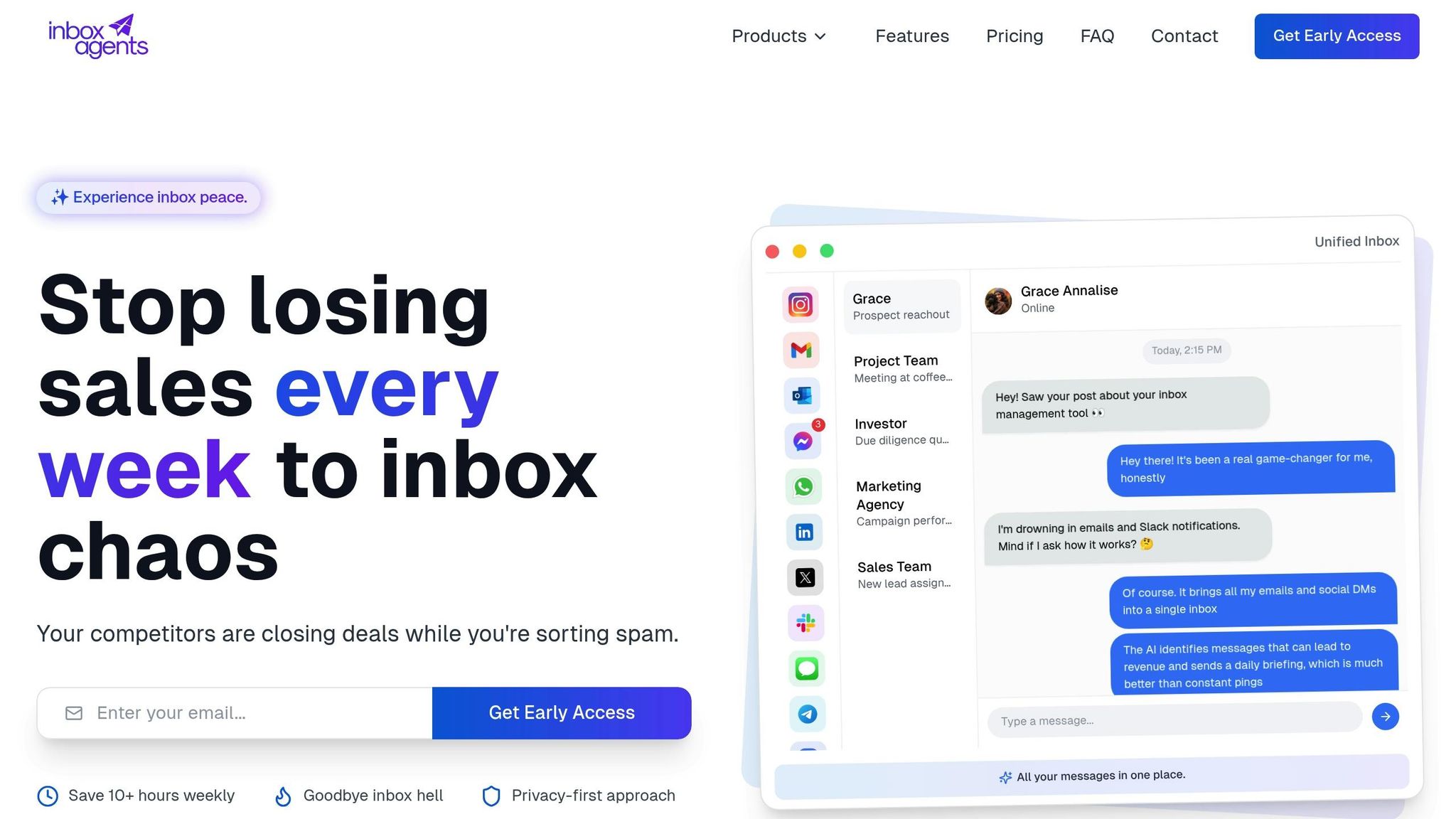
Inbox Agents brings together various messaging channels into a single platform, making it easier to predict and manage customer support demand. By utilizing advanced AI, it forecasts customer needs across different channels and timeframes, providing a valuable tool for US businesses juggling multiple communication touchpoints. This streamlined system lays the groundwork for the forecasting capabilities discussed below.
Forecasting Accuracy and Reliability
Inbox Agents uses a multi-variable analysis approach that factors in seasonal trends, product launches, marketing campaigns, and even external events to deliver highly detailed, time-based predictions. These forecasts are broken down by hour, day, and week, complete with specific confidence intervals, offering businesses a clear picture of what to expect.
The AI continuously learns and improves over time, comparing actual support volumes with its predictions. Within just 3-4 months, this process leads to noticeable improvements in forecast precision as the system adapts to the unique patterns of each business.
Real-world applications highlight the platform's impact. For instance, Northern Glasses, a Shopify merchant, cut support costs by 31% and improved response times by 2.4x using AI-driven forecasting. By analyzing historical data, the system pinpointed key demand drivers.
Similarly, in healthcare, Memorial Regional Hospital reduced overtime expenses by 42% and shortened patient wait times by 3.1x after adopting these forecasting tools.
Integration with US-Preferred Messaging and CRM Platforms
Inbox Agents seamlessly integrates with popular communication and CRM tools commonly used in the US. It connects with over 100 platforms, including Salesforce, Jira, Asana, and WhatsApp, enabling support teams to streamline workflows. This integration is essential for accurate forecasting, as it pulls historical data from ticketing systems while factoring in external influences.
The platform’s unified interface allows businesses to combine email, live chat, WhatsApp, and voice support into one system. By analyzing support patterns across all channels simultaneously, the AI generates more reliable predictions. Real-time data from these integrations further enhances the system's precision.
AI-Driven Analytics and Real-Time Insights
Inbox Agents' AI doesn’t just forecast - it also identifies the root causes of sudden support spikes and adjusts predictions in real time. This adaptability ensures that forecasts remain accurate, even when business conditions shift unexpectedly. As a result, support teams can spend less time analyzing numbers and more time focusing on delivering top-notch customer service.
The system combines quantitative data, like ticket volumes and resolution times, with qualitative inputs such as product launch details and marketing schedules. This well-rounded approach often leads to 15-30% better resource allocation and noticeable reductions in customer wait times.
For businesses new to forecasting, starting with high-traffic channels and gradually expanding as the system’s accuracy improves is recommended.
2. Crescendo.ai
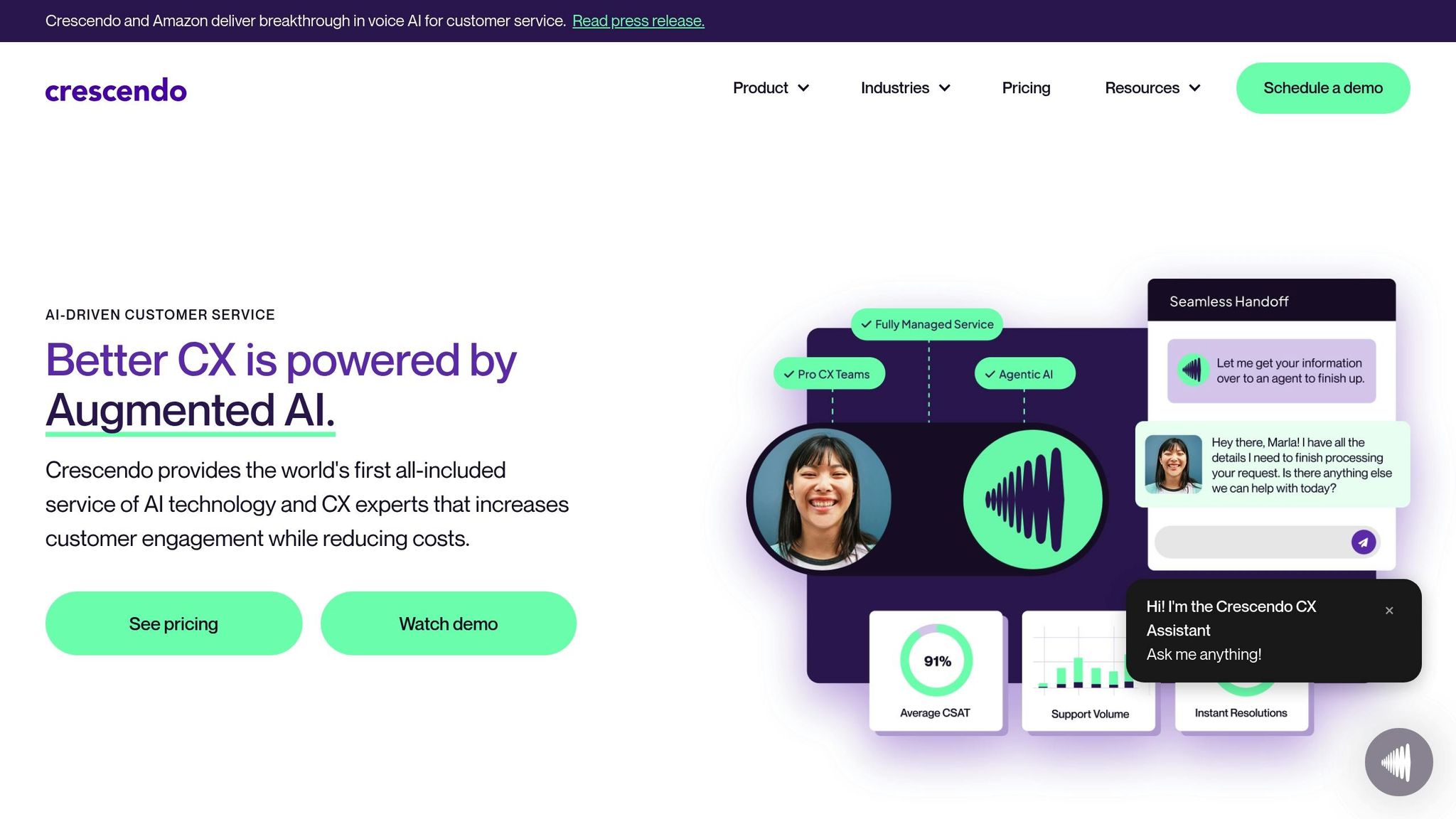
Crescendo.ai stands out by combining predictive analytics with high-accuracy responses. By analyzing customer interactions, feedback, and behavioral trends across multiple touchpoints, the platform predicts fluctuations in support demand. This helps U.S. businesses allocate resources more efficiently and manage workloads with precision. Similar to Inbox Agents, Crescendo.ai uses AI to deliver actionable insights, underscoring the growing trend of intelligent tools for support demand forecasting.
Forecasting Accuracy and Reliability
Crescendo.ai boasts an impressive 99.8% customer service response accuracy, far surpassing the typical 90% achieved by human-staffed teams. This remarkable precision is the result of advanced AI technology that blends machine learning with human expertise.
"Using AI, you can hit 70% or 80% accuracy fairly easily. Getting to 90% is harder. But getting to 99.8%, that's a different league." – Zack Urlocker, Crescendo's COO
The platform uses a smart categorization system that highlights recurring issues and detects time-based spikes in support requests. These insights help businesses fine-tune their support operations. By continuously updating its knowledge base and avoiding AI hallucinations, Crescendo.ai ensures reliable forecasting even as business conditions evolve.
In practical terms, the platform has delivered measurable results, such as a 20% reduction in support costs at launch and the ability to instantly resolve 75% of interactions. Ambiguous cases are seamlessly handed off to human experts, maintaining accuracy while maximizing automation.
Integration with U.S.-Preferred Messaging and CRM Platforms
Crescendo.ai integrates seamlessly with popular U.S. platforms through an open API, ensuring a quick and hassle-free setup. It connects with Salesforce, Zendesk, Amazon Connect, Genesys Cloud, Freshdesk, Gorgias, and Shopify. The integration process can be completed in as little as three weeks, with regular updates provided every quarter.
The platform works alongside existing systems, acting as a hub for fully automated quality assurance and insights across all interactions. From CRM and ticket system integration to knowledge management preparation, Crescendo.ai handles the entire onboarding process, ensuring a smooth transition for support teams. These integrations enable real-time analytics, further enhancing the accuracy of demand forecasting.
AI-Driven Analytics and Real-Time Insights
Crescendo.ai transforms support data into actionable insights, enabling businesses to forecast demand with precision. By analyzing patterns in customer interactions, the platform identifies recurring issues that can be addressed through self-service tools or product improvements. This proactive approach allows businesses to anticipate and prepare for spikes in support requests.
"Customers don't care if their answer comes from an agent, chatbot, article, or FAQ. They just want to avoid jumping through hoops to get it." – Zack Urlocker, Crescendo's COO
The platform offers detailed analytics that improve support operations and boost customer satisfaction through data-driven decisions. By consolidating insights from all interactions, Crescendo.ai provides a complete view of support demand, paving the way for optimal resource allocation and precise forecasting.
Crescendo.ai operates on a performance-based pricing model of $2.99 per resolution, which includes 24/7 support, customer insights, and software licensing. This approach ties costs directly to successful outcomes, making it easier for businesses to justify investing in AI-powered solutions.
Compliance with U.S. Data Privacy Standards
Crescendo.ai places a strong emphasis on data security and compliance with U.S. privacy regulations. The platform uses TLS and AES-256 encryption to safeguard sensitive data.
"At Crescendo, we prioritize the security of our clients' data and the integrity of our services. Our commitment to security encompasses all aspects of our operations, ensuring that your information is protected at every stage." – Crescendo AI
Strict access controls are enforced based on job roles, with multi-factor authentication required for administrative access. The platform operates on secure cloud infrastructure that meets ISO 27001, SOC 2, and GDPR standards, with SOC 2 and HIPAA certification currently underway. Crescendo.ai also adheres to a comprehensive Data Processing Agreement, which includes EU Standard Contractual Clauses and ensures compliance with the CCPA. The company guarantees that customer data will only be used for specified services, with no unauthorized retention or disclosure.
To maintain robust security, Crescendo.ai conducts regular audits, vulnerability assessments, and 24/7 monitoring. These measures ensure the integrity of sensitive forecasting data and uphold real-time accuracy in support operations.
3. Webex Contact Center AI
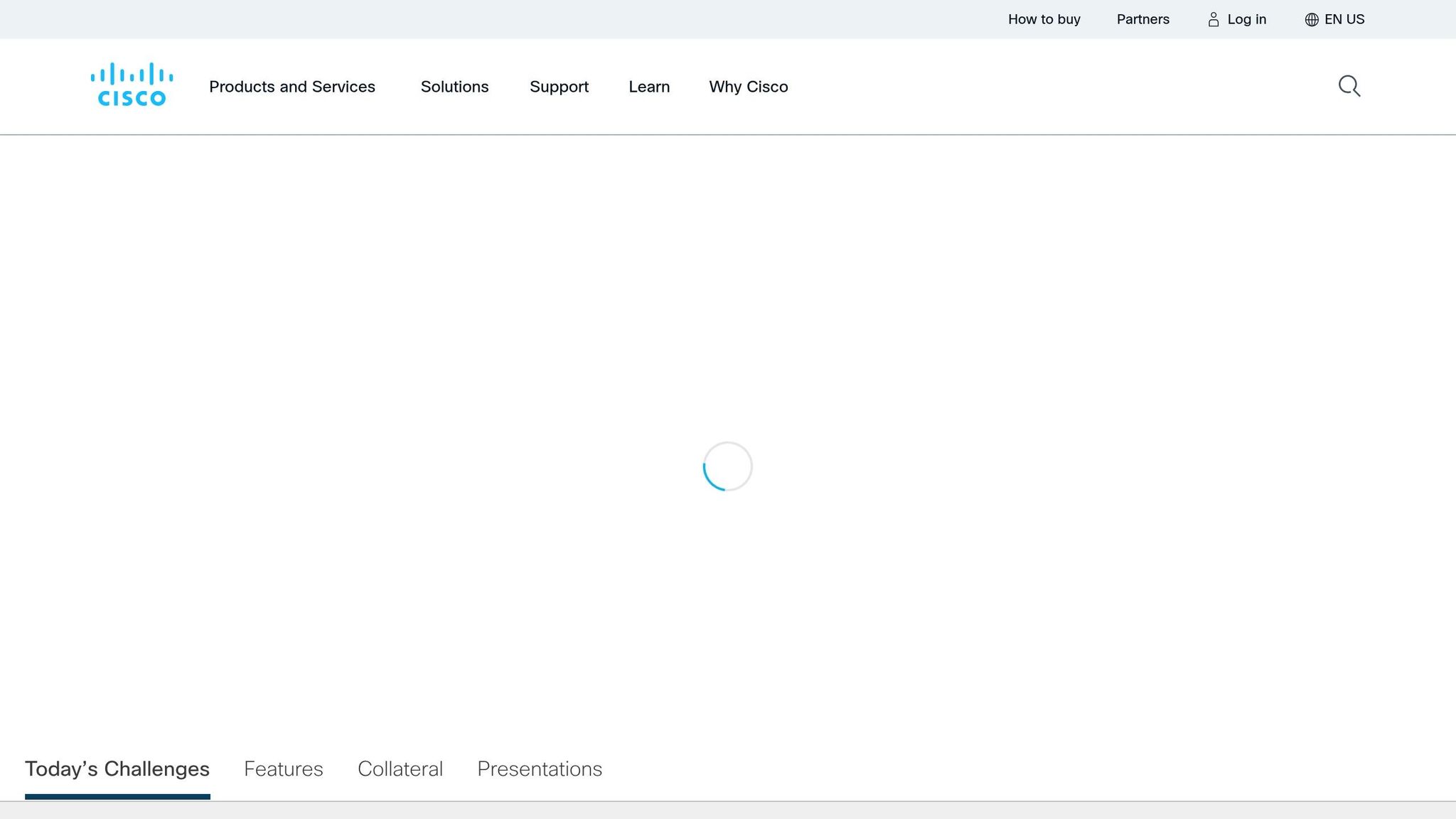
Webex Contact Center AI takes advantage of real-time data to improve support forecasting, blending predictive analytics with live monitoring. By analyzing historical patterns, seasonal trends, and marketing impacts, it helps U.S. businesses make accurate forecasts and adjust operations effectively.
Forecasting Accuracy and Reliability
Webex Contact Center AI excels in forecasting contact center demand using predictive analytics. It examines past trends while factoring in variables like time of day, seasonality, and marketing campaigns. This approach helps businesses anticipate customer interaction patterns and allocate resources efficiently.
The platform also provides real-time guidance, automatically adjusting staffing levels when unexpected changes occur. This ensures that service quality remains consistent.
Its resource management strategy combines predictive insights with analytics. Managers can optimize staffing based on anticipated demand, while dynamic scheduling tools align agent shifts with predicted call volumes, creating a more streamlined operation.
Integration with US-Preferred Messaging and CRM Platforms
Webex Contact Center AI integrates seamlessly with communication channels like email, chat, social media, and SMS, consolidating data into a single interface. This unified system supports thousands of users across various industries. With over 75% of call centers now offering omnichannel support, Webex ensures its forecasting models draw from all customer touchpoints.
These integrations provide businesses with actionable insights, enhancing their ability to predict and manage demand effectively.
AI-Driven Analytics and Real-Time Insights
Webex Contact Center AI doesn’t just collect data - it transforms it into actionable forecasts. By analyzing factors like historical interaction volumes, seasonal shifts, and marketing efforts, the platform delivers multi-dimensional insights. This allows support managers to make proactive decisions about staffing and resource allocation, which is especially useful during product launches, promotions, or unexpected surges in demand.
These analytics also contribute to long-term planning by identifying trends in customer behavior. This helps businesses refine their overall operations and better prepare for future needs.
Compliance with US Data Privacy Standards
In addition to its advanced analytics, Webex prioritizes data security with strong encryption protocols. It complies with U.S. data privacy regulations, ensuring sensitive customer information is handled transparently and securely. Cisco, the company behind Webex, does not retain customer input data after the AI inference process.
The platform uses robust encryption standards, such as AES-256 for data transmitted to the cloud and AES-128 for media packets. It supports TLS 1.0, 1.1, and 1.2 with high-strength ciphers, ensuring secure communication channels.
For healthcare organizations, Webex Contact Center AI offers HIPAA-compliant deployment options. Cisco signs business associate agreements with HIPAA-covered entities and implements necessary administrative and technical safeguards. The platform also supports GDPR compliance, protecting personal data. Furthermore, Microsoft, the provider of the third-party AI model, does not access or store Cisco customer data. Cisco enhances content safety by using content filtering features from Azure OpenAI.
4. Tidio

Tidio stands out as a versatile platform that combines live chat, email, and social media messaging into one streamlined interface. Designed to meet the demands of modern customer engagement, it uses machine learning to predict support needs while offering automation tools to manage interactions more efficiently. It's an all-in-one solution for businesses looking to improve multi-channel support and streamline customer service operations.
Forecasting Accuracy and Reliability
Tidio uses real-time data and predictive analytics to refine its forecasting capabilities. By analyzing past interactions, seasonal trends, and customer behavior, it helps businesses anticipate support needs with precision. This allows companies to maintain the right staffing levels, avoiding the pitfalls of being understaffed during busy times or overstaffed during lulls. The result? Smarter resource allocation and better cost management.
Integration with Popular Messaging and CRM Tools
Tidio works seamlessly with platforms like Messenger, Instagram, WhatsApp, Zendesk, HubSpot, Salesforce, and many others via Zapier. These integrations collect customer interaction data from multiple touchpoints, enhancing the platform's ability to predict support demand.
Studies show that businesses using three or more communication channels saw a 495% increase in orders compared to those relying on just one. This multi-channel approach not only improves customer engagement but also strengthens demand forecasting.
With a 4.7/5-star rating on G2 and Capterra, Tidio has earned high praise for its ability to manage interactions across various channels effectively.
AI-Driven Analytics and Real-Time Insights
Tidio’s AI tools analyze customer interactions to provide valuable insights. By monitoring conversation volumes, response times, and inquiry patterns, it identifies trends that influence support demand. This real-time monitoring is especially useful during events like product launches, promotions, or seasonal spikes, allowing businesses to adjust staffing dynamically.
This proactive strategy ensures consistent service quality while keeping operational costs in check, even during periods of fluctuating demand.
Commitment to US Data Privacy Standards
Tidio prioritizes data security and privacy, operating under the jurisdiction of the U.S. Federal Trade Commission (FTC) through its subsidiary, Tidio LLC. It aligns with key data privacy frameworks, including the EU-U.S. Data Privacy Framework (EU-U.S. DPF), UK Extension to the EU-U.S. DPF, and Swiss-U.S. Data Privacy Framework (Swiss-U.S. DPF).
The platform employs strong security measures like data encryption (both at rest and in transit), TLS protocols, and hashed password storage. Tidio has been GDPR-compliant since May 25, 2018 and is actively pursuing SOC 2 certification.
For businesses in states like California and Nevada, Tidio complies with the California Consumer Privacy Act (CCPA), California Privacy Rights Act, and relevant Nevada laws. Its Trust Center offers transparency by providing access to compliance documentation and security details.
Tidio’s robust privacy and security practices make it a reliable choice for businesses navigating the complex landscape of US data regulations.
sbb-itb-fd3217b
5. InsightSquared
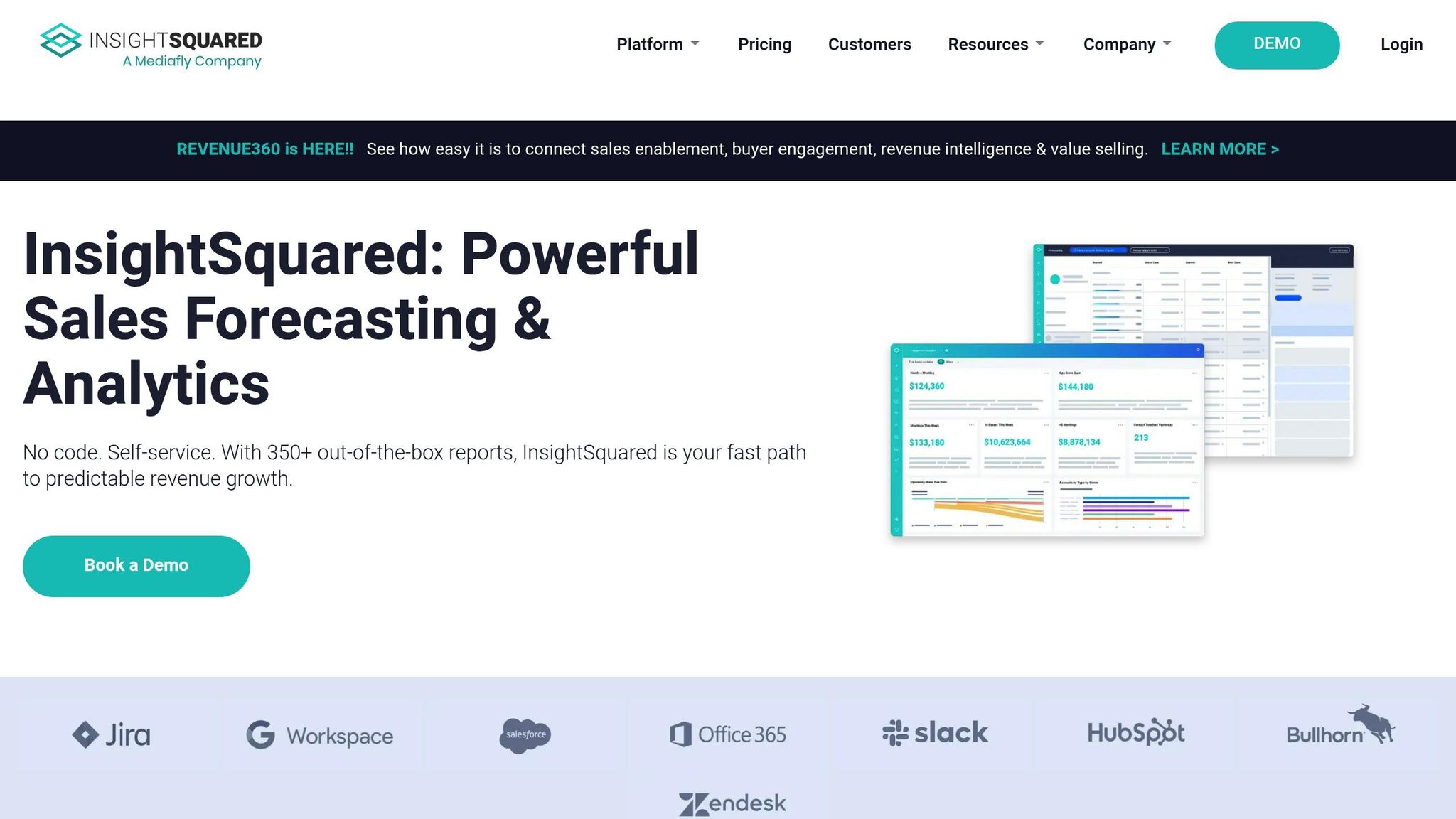
InsightSquared takes a data-driven approach to demand forecasting by blending machine learning with human expertise. Now integrated into Mediafly's Revenue 360 platform, this tool eliminates the guesswork in forecasting by automating data capture and delivering AI-powered insights.
Forecasting Accuracy and Reliability
Did you know that fewer than 20% of sales organizations achieve 75% accuracy in their forecasts? InsightSquared addresses this challenge by combining manual inputs with machine learning. Features like AI-driven Confidence to Close and Ideal Customer Profile scores help reduce bias and identify risks. Companies using revenue intelligence platforms have reported a 15–20% boost in forecasting accuracy.
"As forecasting capability and requirements mature, organizations are investing in revenue operations platforms that combine forecasting, pipeline, and opportunity management." – Forrester SiriusDecisions
InsightSquared enforces disciplined sales processes, focusing on key areas like close dates, forecast category management, and qualification methodologies such as MEDDICC. This structured approach not only improves forecasting accuracy but also ensures that support demand predictions align with sales activity. By forecasting when demand will spike, businesses can better plan staffing to meet customer needs. These precise forecasts also enhance CRM integration, improving overall operational efficiency.
Integration with US-Preferred Messaging and CRM Platforms
InsightSquared integrates effortlessly with Salesforce through its dedicated API, enabling real-time data synchronization. It also connects with HubSpot via Mediafly Intelligence, offering enhanced pipeline analytics. These integrations break down data silos, giving businesses a clearer view of customer engagement trends that impact support demand.
AI-Driven Analytics and Real-Time Insights
Beyond its accurate forecasting and strong integrations, InsightSquared transforms synchronized data into actionable insights. Its dashboards analyze deal activity, engagement levels, and sales processes to predict fluctuations in support volume. This allows support teams to spot risks and opportunities, making proactive staffing adjustments possible.
"Eliminate error-filled spreadsheets by automating forecast submissions and blending human inputs with machine learning to validate predictions and capture opportunities." – InsightSquared
6. Salesforce Einstein

Salesforce Einstein is transforming how businesses approach support demand forecasting. As an AI platform built directly into Salesforce, Einstein uses machine learning to study customer behavior and predict shifts in demand with impressive accuracy. By combining machine learning with real-time data, it enables businesses to make more precise predictions about future needs.
Forecasting Accuracy and Reliability
Einstein Forecasting tackles the uncertainty that often plagues traditional forecasting methods. It analyzes historical sales data alongside current customer behaviors to deliver predictions rooted in data. This approach provides insights into critical factors like deal closure trends and other key drivers.
Businesses using AI for sales forecasting report a 79% accuracy rate - 28% higher than those relying on non-AI methods. Einstein further enhances this by reducing forecasting errors by 20%. This is a game-changer in an industry where only 45% of sales leaders feel confident in their forecasting accuracy without the help of AI.
"Einstein Opportunity Insights helps sales reps prioritize deals with the highest likelihood to close." - Sarah Franklin, President & Chairwoman Advisory at Salesforce
Integration with US-Preferred Messaging and CRM Platforms
Einstein is seamlessly integrated into the Salesforce ecosystem, pulling real-time customer data from widely used messaging platforms in the US. It connects effortlessly with WhatsApp, Apple Messages for Business, Facebook Messenger, and SMS through Salesforce Agentforce for Service.
Agentforce has already resolved over 1 million support requests, with 85% of customer queries handled without human intervention. This has led to a 65% reduction in response time for 90% of users. Einstein Bots can also be deployed across different areas like marketing, sales, and HR, providing a unified view of customer interactions. This comprehensive integration helps businesses make more accurate demand predictions and respond faster to customer needs.
AI-Driven Analytics and Real-Time Insights
Einstein's advanced analytics provide actionable, real-time insights into customer behavior. By processing data from Salesforce Customer 360, Einstein generates over 200 billion AI-powered predictions daily, covering areas like suppliers, production, and logistics. These insights help businesses anticipate disruptions and stay ahead of challenges.
Predictive analytics allow Einstein to forecast trends, helping companies align their strategies with future market demands. It identifies high-potential leads, enabling sales teams to prepare for increased inquiries from prospects most likely to convert. Additionally, Einstein tracks emerging trends and changes in consumer preferences, giving businesses the flexibility to adapt their strategies as needed.
AI-enhanced demand forecasting has proven to reduce supply chain errors by 30–50%, leading to a 65% drop in lost sales due to stockouts. It also automates up to 50% of workforce management tasks, cutting costs by 10–15%.
To get the most out of Einstein, businesses should ensure their data is clean - removing duplicates and correcting errors to improve the accuracy of recommendations. Regularly reviewing AI usage and updating Einstein’s settings to reflect changes in products or services can further enhance its forecasting precision.
7. Zendesk AI
Zendesk AI wraps up our list by reshaping how businesses handle support demand forecasting. Drawing from billions of customer interactions, this platform combines workforce management tools with intelligent forecasting to help companies stay ahead of fluctuating support demands. It doesn’t just predict demand - it turns those insights into actionable workforce strategies.
Forecasting Accuracy and Reliability
Zendesk's Workforce Management (WFM) system uses AI-driven predictive tools to create precise staffing forecasts based on historical trends and customer behavior. By analyzing past data, it anticipates staffing needs for both short-term and seasonal spikes.
What sets Zendesk apart is its ability to automatically generate detailed agent schedules. These schedules account for training sessions, breaks, and the variety of ticket types agents handle. This ensures that every forecast seamlessly translates into a practical workforce plan.
The platform also tracks vital performance metrics, such as average handle time and occupancy rate, giving managers a clear picture of team efficiency. These insights directly influence future demand predictions. Considering that 69% of customer experience leaders struggle with forecasting labor needs, Zendesk’s AI approach tackles one of the industry's biggest challenges.
"I think automated triage is something any business can benefit from. We've seen time savings of 220 hours per month by eliminating manual triage." - Gianna Maderis, principal customer experience manager at Zendesk
Integration with US-Preferred Messaging and CRM Platforms
Zendesk AI integrates effortlessly with the messaging platforms most popular in the U.S., offering omnichannel support that connects with social media, enterprise tools like Microsoft Teams, and various messaging apps. This makes it a perfect fit for businesses catering to the U.S. market’s preference for seamless communication across multiple channels.
Additionally, Zendesk’s native CRM solution, Zendesk Sell, works hand-in-hand with its support functions, creating a unified view of customer interactions. For businesses already using platforms like Salesforce, Zendesk’s compatibility allows them to enhance their existing systems with advanced forecasting capabilities.
For example, Unity, a development platform, leveraged Zendesk AI’s knowledge base to deflect 8,000 tickets, saving $1.3 million. Similarly, Esusu, a financial technology company, uses Zendesk AI’s ticket summarization tools to improve agent productivity and streamline onboarding. These examples highlight how accurate forecasting can drive efficient team management.
AI-Driven Analytics and Real-Time Insights
Zendesk AI doesn’t stop at forecasting - it also uses real-time analytics to optimize support operations. Its analytics engine focuses on key areas like response efficiency, resolution rates, and escalation trends. By combining predictive analytics with natural language processing, the platform helps teams improve performance across the board.
Zendesk AI’s ability to reply to tickets in under a minute and automatically resolve 60–80% of them reduces workload by up to 70%. Shopify’s experience is a testament to this: after implementing Zendesk AI analytics in June 2023, their average response time plummeted from 4 hours to just 45 minutes, while their first-contact resolution rate jumped from 65% to 82%.
The platform’s AI Insights Hub centralizes data, offering actionable recommendations for workflow improvements. Administrators receive suggestions for automating responses or refining routing rules, making the system smarter with every interaction.
"With Zendesk AI, I'm seeing an exciting opportunity to streamline and be more efficient. That will allow our team to have more time to work on projects of importance to the business, be it driving revenue or new sales channels." - Ian Hunt, director of customer services at Liberty London
Zendesk AI also includes quality assurance tools that evaluate agent performance, gauge customer sentiment, and identify areas where real-time coaching is needed. By learning from each customer interaction, the system continuously refines its forecasting capabilities. This comprehensive approach ensures businesses can rely on Zendesk AI to stay ahead of their support needs.
Tool Comparison Table
When selecting an AI forecasting tool, it's essential to weigh key performance factors. Below is a detailed comparison of seven tools, focusing on their forecasting accuracy, integration options, compliance with US regulations, pricing, and AI-powered features.
| Tool | Forecasting Accuracy | Integration Options | US Compliance | Pricing (USD) | Key AI Features |
|---|---|---|---|---|---|
| Inbox Agents | Real-time analysis with predictive insights and AI-driven summaries | Unified interface for major messaging platforms and CRM systems | Fully compliant with US data protection standards | Custom enterprise pricing | AI inbox summaries, smart replies, automated filtering, personalized responses |
| Crescendo.ai | Machine learning models that improve continuously | Native CRM integrations and API connectivity | Meets GDPR and US privacy standards | Starting at $299/month | Predictive analytics, trend detection, behavioral pattern recognition |
| Webex Contact Center AI | Enterprise-level accuracy using historical data | Cisco ecosystem and third-party telephony integration | SOC 2 Type II, HIPAA compliant | $75–$150 per agent/month | Voice analytics, sentiment analysis, workforce optimization tools |
| Tidio | Basic predictive modeling suited for small teams | Integrates with WordPress, Shopify, and websites | Offers US data residency options | $29–$749/month | Chatbot automation, visitor tracking, conversation routing |
| InsightSquared | Advanced statistical modeling capabilities | Integrates with Salesforce, HubSpot, and Pipedrive | US-based data centers | $125–$500 per user/month | Revenue forecasting, pipeline analytics, quota management |
| Salesforce Einstein | Advanced AI algorithms utilizing extensive datasets | Native integration within Salesforce and AppExchange | Comprehensive US compliance framework | $25–$300 per user/month | Predictive lead scoring, opportunity insights, automated data capture |
| Zendesk AI | Predictive support demand forecasting | Omnichannel support with Microsoft Teams and social media integration | US data residency and enterprise-grade security | $55–$215 per agent/month | Automated ticket resolution, quality assurance, performance analytics |
This table highlights critical differences to help you pick a tool that matches your needs. The metrics provide insight into how these AI-driven platforms enhance forecasting and integrate with US-based systems.
AI-powered forecasting tools significantly outperform traditional methods, which typically achieve 70–79% accuracy. AI systems raise accuracy by over 20%, yet only 7% of sales organizations manage to hit 90% accuracy.
For enterprises, tools like Salesforce Einstein and Zendesk AI provide robust forecasting capabilities but come at a higher cost. On the other hand, platforms like Tidio offer more affordable solutions with basic features, making them ideal for smaller teams. Integration flexibility is another critical factor - tools should connect seamlessly with ERP, CRM, or accounting systems to ensure quick deployment without significant custom development.
Compliance with US data privacy regulations is increasingly crucial as laws evolve. Most enterprise-grade tools include US data residency options and meet standard compliance frameworks, but smaller platforms may have limited geographic data handling capabilities.
Ultimately, the best AI tool should not only enhance forecasting accuracy but also adapt to market changes and integrate effortlessly with your existing support systems.
Conclusion
AI forecasting tools are reshaping the way customer support operates in the US, driving both efficiency and customer satisfaction. Businesses that adopt AI demand forecasting can see up to a 50% improvement in forecast accuracy. These tools also help reduce inventory costs by as much as 20% and automate nearly half of workforce-management tasks, leading to cost savings of 10–15%.
Beyond cost and efficiency, AI-powered forecasting minimizes supply chain errors by 30–50% and slashes lost sales due to stockouts by 65%. For customer support teams, this translates into smarter resource allocation, shorter wait times, and more personalized service for customers.
"AI empowers your team by ensuring every customer gets a timely and consistent response, no matter what. When routine inquiries are handled by AI, it frees up human service agents to quickly address more complicated issues. Better still, implementing AI can ensure your customers can get a response 24/7. It's a powerful way to supplement small teams, which might otherwise struggle to keep up with long call queues."
- Han Butler, President & Co-Founder | ROI CX Solutions
To make the most of these benefits, businesses should focus on careful planning and execution. Start by setting clear objectives and defining key performance indicators (KPIs). Consider factors like company size, integration needs, and compliance requirements when choosing tools. For instance, enterprise solutions like Salesforce Einstein and Zendesk AI offer advanced features, while smaller teams might find platforms like Tidio more budget-friendly.
Maintaining high-quality data is essential. Rigorous data cleaning and preprocessing ensure that AI tools deliver accurate forecasts. Seamless integration with existing CRM systems and communication platforms further enhances efficiency. For US-based companies, selecting tools that support data residency and comply with standards like HIPAA is a must.
The field of AI forecasting is advancing rapidly. According to McKinsey, businesses leveraging intelligent forecasting tools have achieved accuracy improvements of 30–50%. Supply chain management, in particular, has benefited from up to 50% fewer errors with AI demand forecasting software. As these tools continue to evolve, early adoption offers a competitive advantage for customer support teams looking to stay ahead.
FAQs
How do AI tools provide more accurate support demand forecasts compared to traditional methods?
AI tools excel at generating precise support demand forecasts by analyzing vast and intricate datasets with speed and consistency. Unlike older methods, AI has the ability to detect subtle patterns, adjust to shifting trends, and improve its predictions through continuous self-learning.
With accuracy rates ranging from 85-95%, compared to the 60-75% typically seen with traditional techniques, these tools enable businesses to make smarter decisions. The result? Better staffing plans, lower costs, and happier customers thanks to more efficient resource allocation.
What should businesses look for in an AI tool to forecast customer support demand?
When choosing an AI tool to forecast customer support demand, there are a few important aspects businesses should focus on to ensure the solution aligns with their goals. First and foremost is accuracy. The tool should be capable of factoring in data quality, seasonal patterns, and external influences like market shifts or regional differences. It needs to reliably predict demand, even during periods of fluctuation.
Another key consideration is scalability - can the tool grow alongside your business needs? Seamless integration with your current systems is equally important, as it prevents unnecessary disruptions. A tool with a user-friendly interface and clear, actionable insights can make a big difference in simplifying day-to-day operations. Finally, transparency is crucial. Understanding how the AI generates its forecasts builds trust and empowers businesses to make smarter, data-driven decisions.
How do AI tools help ensure compliance with U.S. data privacy regulations?
AI tools play a crucial role in helping businesses stay compliant with U.S. data privacy regulations. They streamline essential tasks like data mapping, risk assessments, and managing user consent. These tools are built to align with laws such as the CCPA and HIPAA, ensuring sensitive information is handled responsibly and ethically.
Many of these tools also incorporate features that notify users about data collection practices, promoting transparency. By embedding strong privacy protections, they help reduce risks, safeguard user data, and keep businesses on track with regulatory requirements.
